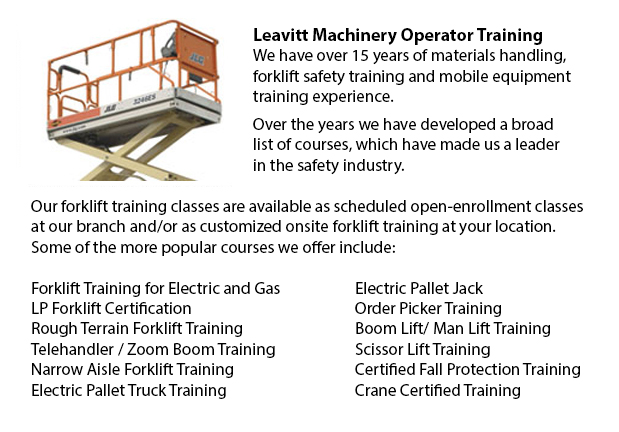
St Catharines Scissor Lift Operator Certification - Rules in North America typically recommend that operators of booms, scissor lifts or aerial work platforms all obtain operator certification. Scissor lift operator certification is not mandatory, but there are advantages to ensuring that this particular training is offered to all the operators.
Scissor lift refers to a platform which vertically moves to be able to allow personnel to get to high levels. Scissor lifts are made with a pantograph - connected, folding supports in an 'X' pattern. Upward movement happens when pressure is applied to the outside of the lowest set of supports, propelling the work platform vertically by lengthening the 'X' pattern. A bridge extends from certain platforms to allow convenient access to the work place.
The platform returns to the ground by manually releasing a valve. The platform returns through simply releasing the hydraulic or pneumatic pressure. This is the main reason that scissor lifts are the machinery of choice at worksites.
Operators that are both experienced or inexperienced would be able to get some benefit from proper scissor lift training. A scissor lift operator certification course could be specifically designed to accommodate for those lifts used at your workplace. The trainees' certificate of training would list the models of machinery on which they trained.
Covered in the classroom instruction are the following subject matters: introduction to scissor lift training; authorization, attitude and rules and guidelines; Occupational Health safety; safety regulations and common dangers; workbook and record of training (or otherwise referred to as ROT)
The in-class session would conclude with a written examination.
Practical hands-on training covers instruction on the following: pre-operational check; safety equipment;; function test checklist; operators instruction manual; regular maintenance and the practical session will conclude with a demonstration of proficiency.
-
St Catharines Heavy Equipment Training Schools
St Catharines Heavy Equipment Training Schools - When selecting an operator training course, there are a lot of heavy equipment training schools to choose from. To be able to ascertain the qualifications you will attain, it is very important to explo... More -
St Catharines Heavy Equipment Operator Training
St Catharines Heavy Equipment Operator Training - Heavy equipment operator training facilities that offer quality standards within the business, offering field performance work and additional machine training are really sought after training features... More -
St Catharines Forklift Training Programs
St Catharines Forklift Training Programs - Are you looking for work as a driver of a forklift? Our regulatory-compliant mobile equipment operator training offers instruction in kinds of forklifts, pre-shift check, fuel kinds and handling of fuels, an... More -
St Catharines Heavy Equipment License
St Catharines Heavy Equipment License - A heavy equipment license can be obtained by taking a certification and preparation course at a private training school or a vocational school. This license would qualify you to operate various types of heavy e... More -
St Catharines Overhead Crane Safety Training
St Catharines Overhead Crane Safety Training - Overhead crane safety training equips operators with skills and knowledge regarding crane safety precautions, accident avoidance, materials handling, and equipment and stock protection. Trainees will lea... More -
St Catharines Scissor Lift Training
St Catharines Scissor Lift Training - Scissor lifts should be operated proficiently to be able to protect the safety of the equipment and the wellbeing of others within the workplace. Operators who are skilled are trained to drive the specific type o... More -
St Catharines Telescopic Training
St Catharines Telescopic Training - Telescopic Handlers are a kind of forklift, normally known as telehandlers. This machine has been increasing in popularity due to its greater lift heights and its versatility. It is often preferred over the convent... More -
St Catharines Boom Lift Certification
St Catharines Boom Lift Certification - Utilizing elevated work platforms allow for maintenance operations and work to be carried out at elevated work heights which were otherwise unreachable. Boom Lift Certification Training educates workers about t... More

Forklift Certification St Catharines
TOLL FREE: 1-888-254-6157
St Catharines, Ontario
forkliftcertificationstcatharines.com/
Email Us
About Us


